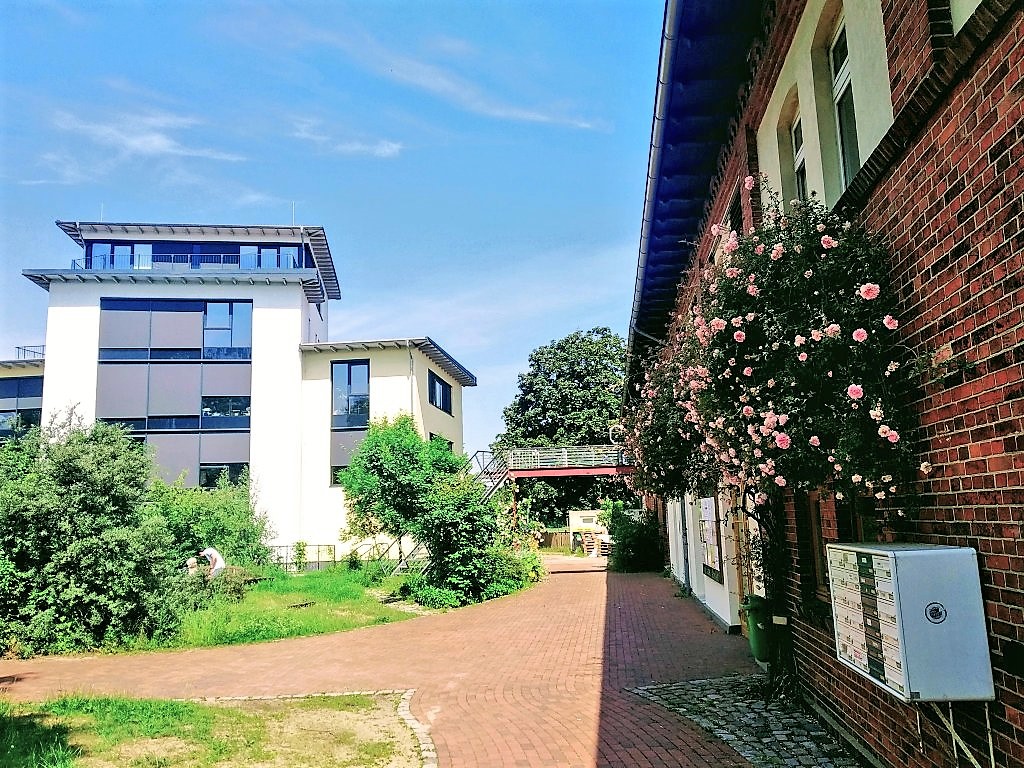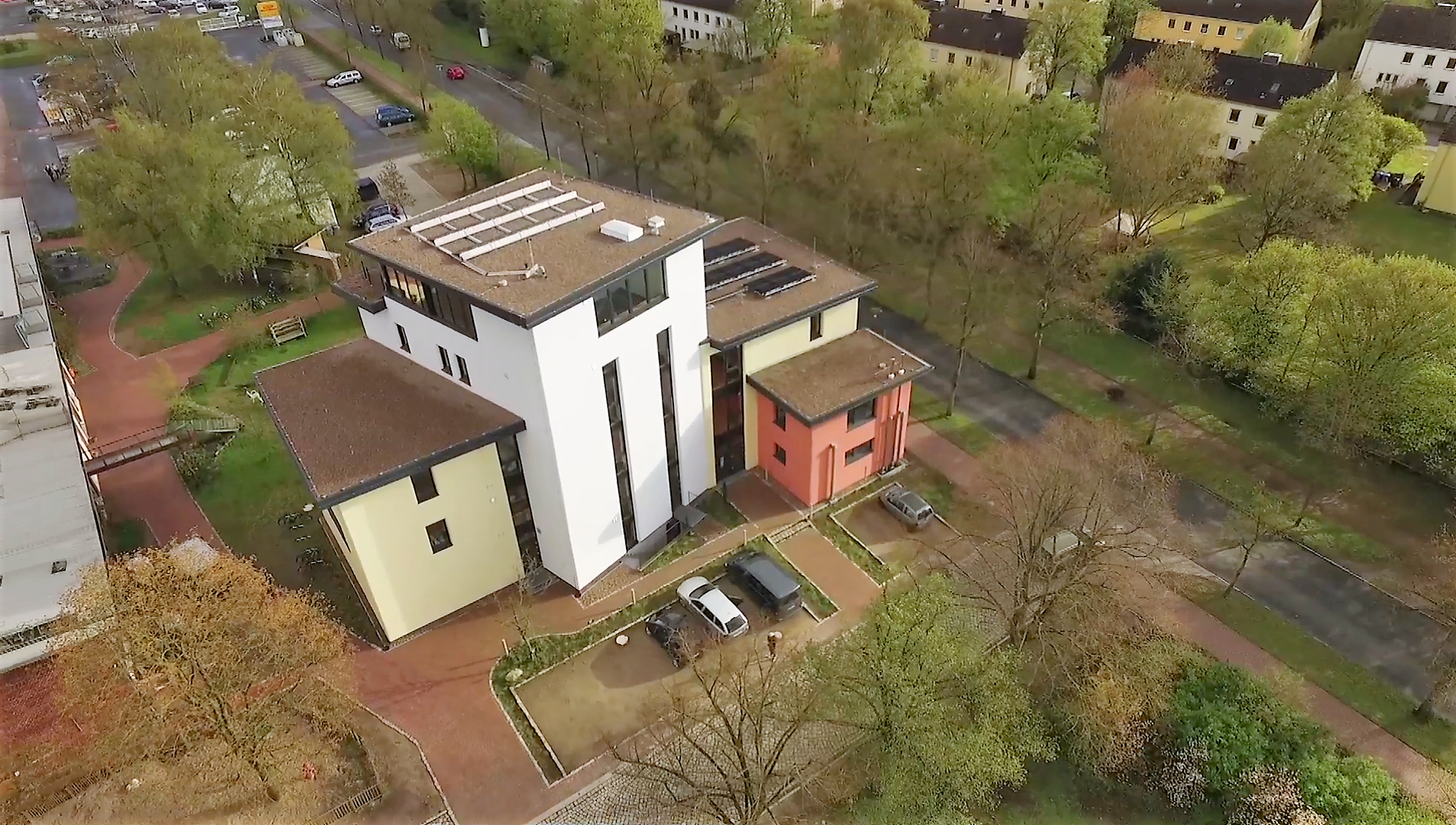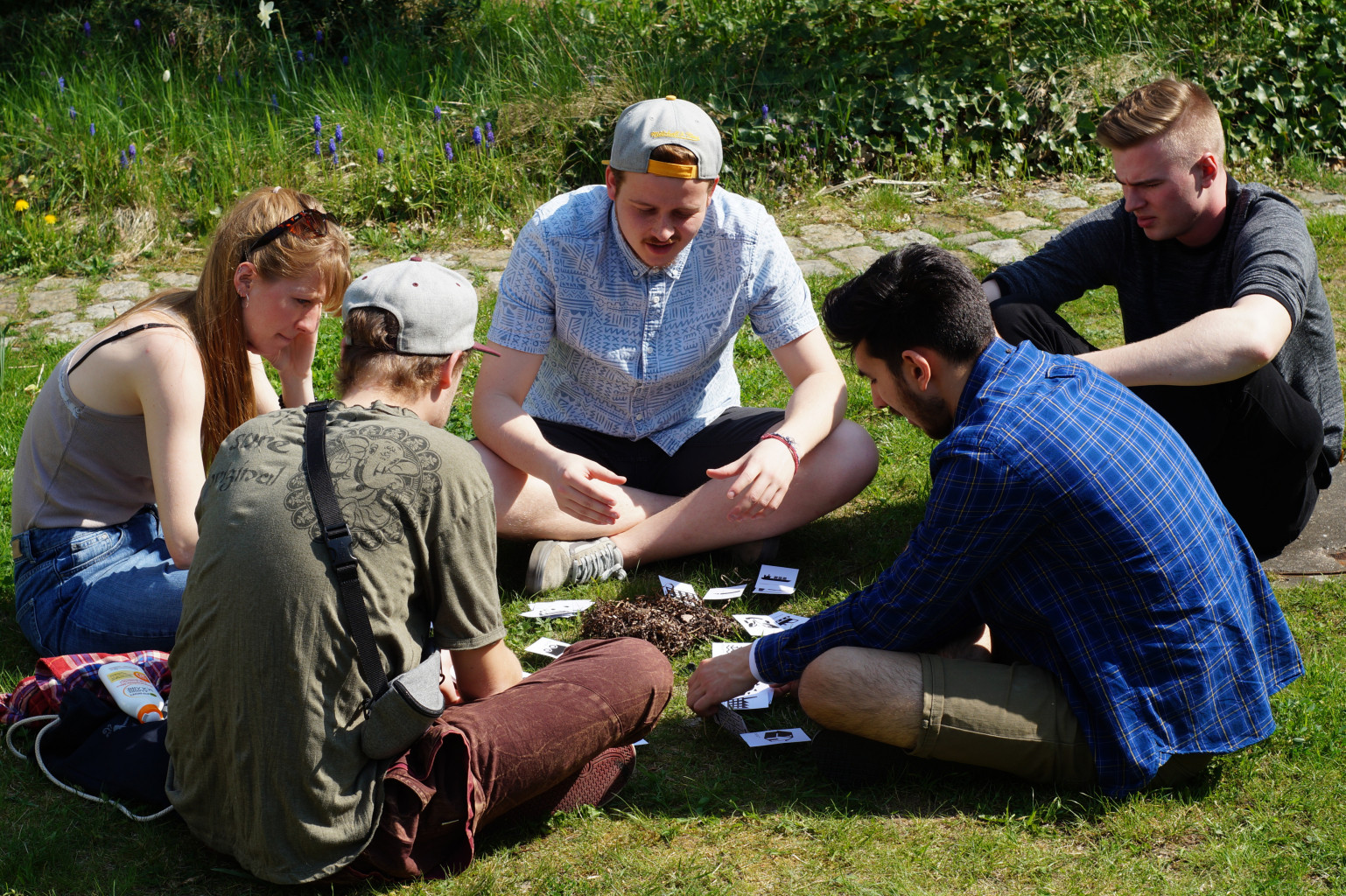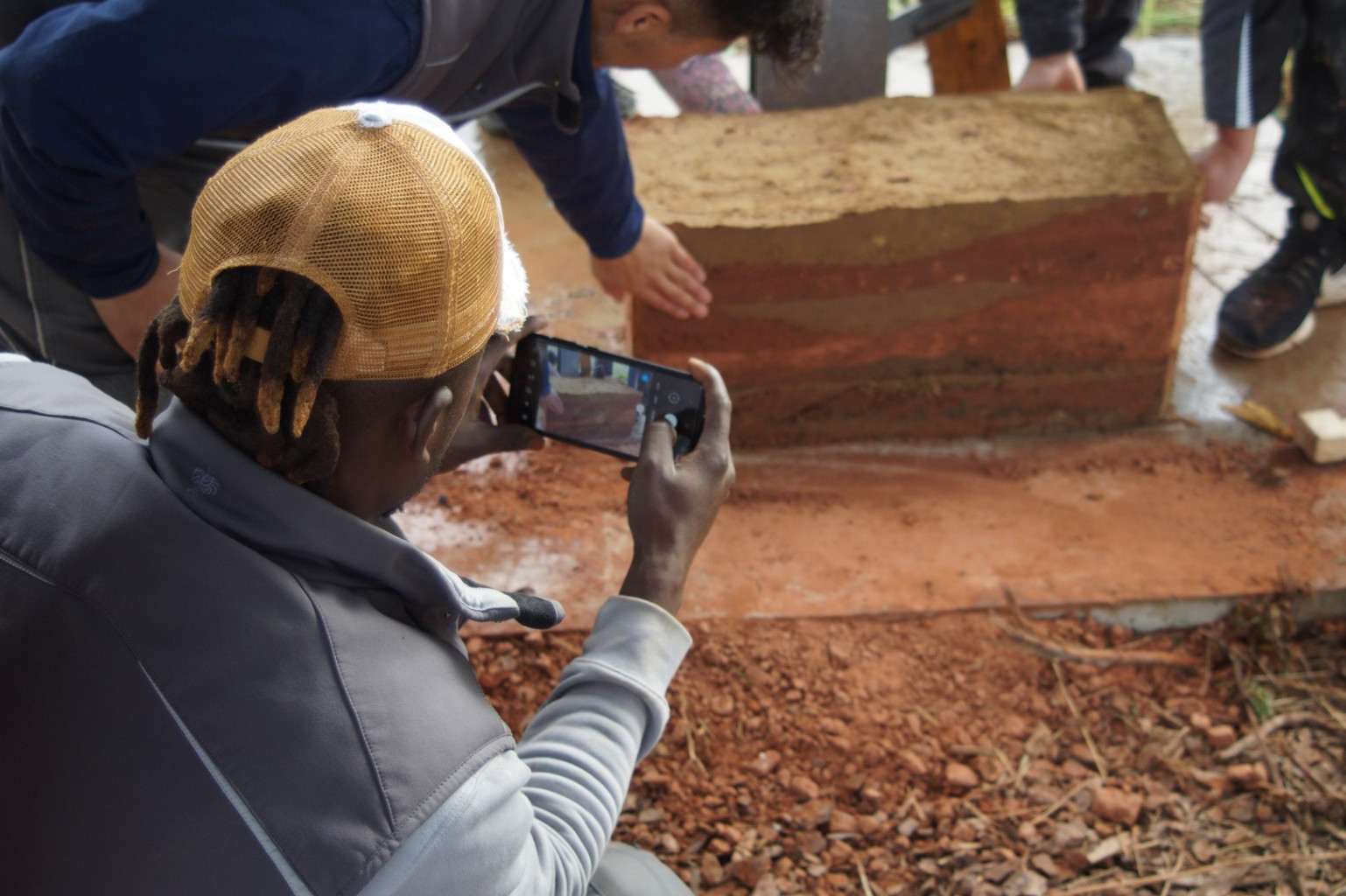Climate Action in Construction
Basic information
Project Title
Full project title
Category
Project Description
We need new planning, legislation for a sustainable building industry, craftmanship that minimises the CO2 footprint buildings, for sustainable, healthy, affordable living. That’s how the Ziel 13 (SDG 13: climate action) interdisciplinary education at Norddeutsches Zentrum für Nachhaltiges Bauen comes into play with: alternative materials, craft and planning with built examples. Over many years, we have developed open didactictics and methods for teaching materials science and building physics.
Project Region
EU Programme or fund
Description of the project
Summary
Since 2012, we do offer training and at the same time set agenda for a construction turnaround (Bauwende) towards truly sustainable, regenerative construction and renovation, which is not just climate-neutral. We are part of the Ecological Centre in Verden, which was founded in the 1990’s – an innovative agent of sustainable construction, which did practical research on direct-plastered straw-insulated timber-frame construction and passive house-suitable straw bale buildings as carbon sinks. The purpose of this research: affordable, durable, healthy housing and commercial space for mixed, urban use. With goals of replication and scaling up. In 2014, the five-storey North German Centre for Sustainable Buildung was built and ensured the first approval of straw construction in Germany. With the experimental, modern timber and straw construction, a place of work, conference, exhibition and also education was created. Here, craftspeople and planners are trained from the very beginning in the construction method, which is suitable for many existing building professions, as it combines skills across trades. The courses offer a range from two-day free subsidised vocational and practical training in building as climate protection to the comprehensive specialist course in straw bale or clay construction. The trainings are offered locally with a location advantage like a fully equipped factory hall, examples of sustainable constructions and flexible training facilities to work on sight. Nationwide at different educational locations training is held with a mobile construction site.Training is only one step towards climate action: it needs to be supported by political decisions. Therefore, an important part of our work is agenda setting. We promote sustainable building and renovation to convince politics, house builders, architects and other decision-makers of the importance of a science-based Construction Turnaround (Bauwende).
Key objectives for sustainability
In our trainings we address, that in Germany construction consumes almost all mineral resources and produces half of the waste. Half of the emissions also occur before the new buildings are used and are currently officially ignored. We show how we can drastically reduce this "grey energy" to a minimum with timber and straw construction methods and create high-performance buildings as CO2 sinks: for climate suitability in all phases of life, from construction to maintenance to demolition. With our Network we have developed a movement to address that this change must above all address existing buildings: After all, buildings account for about one third of energy consumption and CO2 emissions in Germany and in the EU it’s still one of the biggest consuming sectors. Despite the fact that Bauhaus’ 1920ies construction prototypes had already biomass insulation in it “Torfoleum”. Cheap fossil fuels from ‘natural’ gas, oil and coal, but also a great deal of biomass, supply the large amounts of heating energy that are still needed because our built environment is very inefficient. This amount of energy waste cannot be solved simply by replacing boilers or electrification: Concepts for better living and working are needed. Our trainings pick up this challenge by providing a multitude of topics just about any topic in the industry which were developed in participative processes. We address mixed target groups: apprentices, students, craftsmen, architects, VET teachers and trainers. The trainings include theory as well as practice. We aim not to only inform, but involve the training participants, so that they can better integrate the training contents into everyday practice. Since 2014, thousands of participants have been trained by both Ziel13 and biwena. By acquiring ESF and BMU funds, we enabled free-of-charge participation for the courses.
Key objectives for aesthetics and quality
“Clay is a gateway drug”, in terms of aesthetics and quality of experience. In this sense, our trainings allow to deal with the topic “sustainable construction” in a holistic way: by touching, applying to every day’s work situations, critical reflection of mastering its use and limits. We want to promote it as a holistic perspective, for the house as a system, for material justice, for the entire life cycle, not just for the time of use. This is a perfect fit to the original Bauhaus didactic scheme [Bauhaus-Lehre (1923)], just not centred at the house, but the house in the world. Our training participants are empowered to act as experts in their field, network with each other and multiplicators. Besides the craft aspect, “sustainability” as key objective is taken seriously: not merely as a characteristic of materials and techniques, but as a personal attitude. For example, one exercise at the beginning of the training is to list oneself by carbon footprint and to exchange with other participants; another task is to note and discuss what sustainability means to oneself. This approach is important for many participants because they feel invited to bring more of their personal convictions into the world of work: “great, I'm not the only eco-wacko here!”
With regards to agenda setting, we analyse communication on sustainability as well as successful forms of agenda setting and communication in social media. Based on that, we set and shape our communication. Its success is visible by the feedback and many followers on Twitter and Instagram/FB.
https://www.facebook.com/norddeutscheszentrum/
https://www.instagram.com/teamverden/?hl=de
https://twitter.com/burchertmichael?lang=de
Key objectives for inclusion
The statutes of our founding association Ökologisches Zentrum Verden e.V. state: "Group-related misanthropy, including sexism, homophobia and racism, are to be actively combated. Group-based hostility towards people, including sexism, homophobia and racism, will be actively combated in the businesses and in the house. This is the subject of an active culture of perception and feedback between the user groups”. We have been practising this for more than 20 years and it is part of our trainings as well. This means e.g. that we
# Contact women's networks in the trades, inform them about the project goals, involve them if they are interested;
# make working conditions, wages, the possibility of part-time work in building trades an issue;
# have at least 10% female participants in the modules;
# Have experienced female craftspeople lead practical modules.
# Encourage the implementation of workshops with heterogeneous participants, because we have seen that they benefit greatly from the mix;.
# Disseminate information about the project widely so that young people without institutional involvement know how they can participate.
# model appreciative communication and intervene when sexist, racist or homophobic remarks are made.
Results in relation to category
We want sustainable building to be anchored in a consistent way: on a political, educational and personal level.
In the training modules we have achieved:
- that the participants think holistically with regard to building, see sustainability as an evaluation criterion; know, that there are many (also physically convincing and economical) alternatives to conventional building (professional conceptual change);
- that the participants do not feel alone in their commitment to sustainability, but networked with a growing community,
- that they recognise our strong community and that they recognise how they can help to shape society in the sense of climate-positive development (as advisors, good examples; professionals who are able to competently implement ecological building projects)
(personality-related conceptual change);
- that vocational schools and training centres establish more cooperations with extracurricular educational actors, these cooperations are important partnerships to achieve climate action in construction
- at those schools and training centres sustainability is embedded in the vocational school curricula so that the impulses of the extracurricular partners do not fizzle out, but the enthusiasm and willingness to innovate they generate is a changemaker and goes into everyday school life
- for example we had 6 course participants from a the technical school of Berlin, teaching stuff, which has changed their curiculum about sustainable construction after they had done our 2 day trainings.
- that the building turnaround is necessity for climate protection and is already possible in political framework conditions, although needs support.
Through agenda setting, we support social movements like Architects for Future, consultation for amendments to the building code, advice for party programs, and the Building Turnaround (Bauwende jetzt!) proposal to the German Parliament.
How Citizens benefit
Increasingly, citizens are interested in healthy and natural living. Ecological and climate-friendly construction methods offer answers to these needs. Clay, for example, has purifying and disinfecting properties. Natural colors create a sense of well-being and protect against harmful outgassing. CO2-neutral living makes a decisive contribution to climate protection, but also creates good conditions for healthy living. The informal transfer of knowledge and guidance on practical building makes it possible to live the way you want to. The knowledge gained is applied by many project participants in their own construction work. Some trainees give us feedback that because of our courses they feel inspired to build their own straw houses. People with teaching assignments have integrated our module content into their courses. We reach all multipliers involved in construction and rehabilitation. They carry the learned skills and knowledge about ecological building into the wider society, which in turn leads to more demand for climate-friendly building. This yo-yo effect has positive implications for the achievement of climate protection goals but also for the future of the sustainable construction business sector. The increasing demand can already be felt by many craftsmen and partner companies. Every day, we receive calls and e-mails from craftsmen and planners who want to expand their portfolio to include sustainable construction. We see an increasingly impact on society with a strong rebound effect. Besides the training, agenda setting is an important part of this project: We argued for the relevance of regenerative construction and renovation in advisory boards, webinars, articles and in the radio, and social media, where we are connected internationally.
Innovative character
A new European Bauhaus needs to achieve the Sustainable Development Goals (SDGs) with a climate-neutral building stock in 2050. This requires more than just a few efficient new buildings, it also requires well-trained people who can experience meaning in their planning and building plus the ability to look ahead for circularity. Together with our students and multiplicators we created a real laboratory to try out everything from efficient renovation and climate relieving new construction with crop residues and low impact local materials in general - rooted in science.
Sustainability is not only a topic, but is lived through the embedding in the „Ökozentrum Verden“. Unique place of education with lived examples of a New European Bauhaus, both by renovation of a Bauhaus period building and a high tech straw building with the typical elements of Bauhaus architecture in the requirements of modern times: climate relief (2t C02e /m² stored). The transformation of the former tank maintenance hall into a training and conference center for sustainable construction shows how innovative the conversion and structural transformation of buildings in the old stock can be. Our innovative construction method shows how urban buildings can be built in an ecological and climate-friendly way.
A scientifically pedagogically based didactics of sustainability was developed in the project. Technical content is taught at the state of the art, regardless of economic conditions. The free participation in the courses of Ziel 13 allows easy access, even for target groups which are yet less involved in the subject but interested or excluded participation for financial reasons. The holistic approach in the fields of sustainability, aesthetics and inclusion is the driver for grassroots movements such as Bauwende-Jetzt (Building Turnaround Now) in order to apply decisive levers for climate protection in building.




